- Posts
- 553
- Likes
- 969
CLA05
·In my uneducated, personal opinion there was never any “oil” of any kind on the dial and however it was stored caused this.
What tangible elements bring you to your current opinion?
In the absence of more background data or information to this story, I find your position a bit too definite... unless you have first hand knowledge with this watch.
So far, I tend to lean towards the position that other have described above: very strange that this dial was ok for 40-50 years, and suddenly, tremendous change.
OF COURSE, we can not rule out that this is scientifically (ie, chemically) possible based on the new environmental conditions in which the watch has been stored vs. where is was previously living/being stored, so we will need to gather facts.
To OP: I understand that you feel that there is no difference on your side when storing this watch vs. the rest of your collection, but can you speak to potential differences of climate between the location where you reside vs. where the watch came from?

 Quite surprised to see this thread rumbling on.
Quite surprised to see this thread rumbling on.Quite surprised to see this thread rumbling on.
FWIW my own curiosity was satisfied when I read on another site a few days ago.
"This optical effect is produced by thin layers of differing refraction index, e.g. oil on water or the surface of soap bubbles, i.e. thin layer of water on air. If the thickness of such layer comes near the wavelength of visible light, varying thickness prefers different colors (i.e. wavelenths) when absorbing or reflecting light, and accordingly creates lots of rainbows.
The same happens when the coating of a dial looses contact to the metal: The thin air layer between metal and transparent lacquer creates rainbows. So the best you can do is nothing or better less than nothing. Adhesion will hold the lacquer on the dial, more reliably than one may believe. But already dabbing it with Rodico may peel of the coating, and once the layer is damaged the rest will peel off without your help."
In this case the paint has come away but crucially on the point of 'sudden degradation' it is possible to see that the paint is continually degrading over time but reaches a catastrophic point where it starts to lose contact with the dial and this appears 'sudden'.
Again just a best guess on an observed phenomenon in the absense of actual facts, so would be interesting to hear if more experienced members subscribe to this view.


Can we maker some assumptions? For example, this is a vintage watch and it was serviced several times in the past? Sounds reasonable? If so, then anyone who serviced similar watches would see some signs of sloppiness / carelessness around the dial hole area and on Hour & Minute hands. Black dial is unforgiving - any marks would be visible. I did not notice and evidence of previous hands removal. It could be that previous watch repair people were so good at what they did, or it could be a sign of redial aka paint job. it would be helpful to see the other side of the dial and the movement itself. If such photos were already posted and i missed them, please point me in the right direction. I do realize that there are some exceptions - i bought some watches that were 100+ years old with pristine dials & hands, but those watches were serviced either once or never since they were originally purchased. Any other watch, that was serviced 2-3 times previously (even by Rolex. Am i allowed to use R-word on Omega forum?), showed some marks (sad).
Can we maker some assumptions? For example, this is a vintage watch and it was serviced several times in the past? Sounds reasonable? If so, then anyone who serviced similar watches would see some signs of sloppiness / carelessness around the dial hole area and on Hour & Minute hands. Black dial is unforgiving - any marks would be visible.
The one thing I can not (yet) wrap my head around is the “timing” of this degradation. It seems really quite strange to me that the OP just had the “bad luck” of purchasing what seems to be a mostly pristine vintage watch that is 40-50 years old, to only then see this rapid degradation in the next 2-3 years after the purchase.
Again, I do not have data or elements to eliminate this hypothesis, but it looks pretty suspect to me.
So I bought this gloss black vintage Omega watch from @omega_enthusiast on IG in 2018. These were the pictures taken by the dealer at the point of sale..
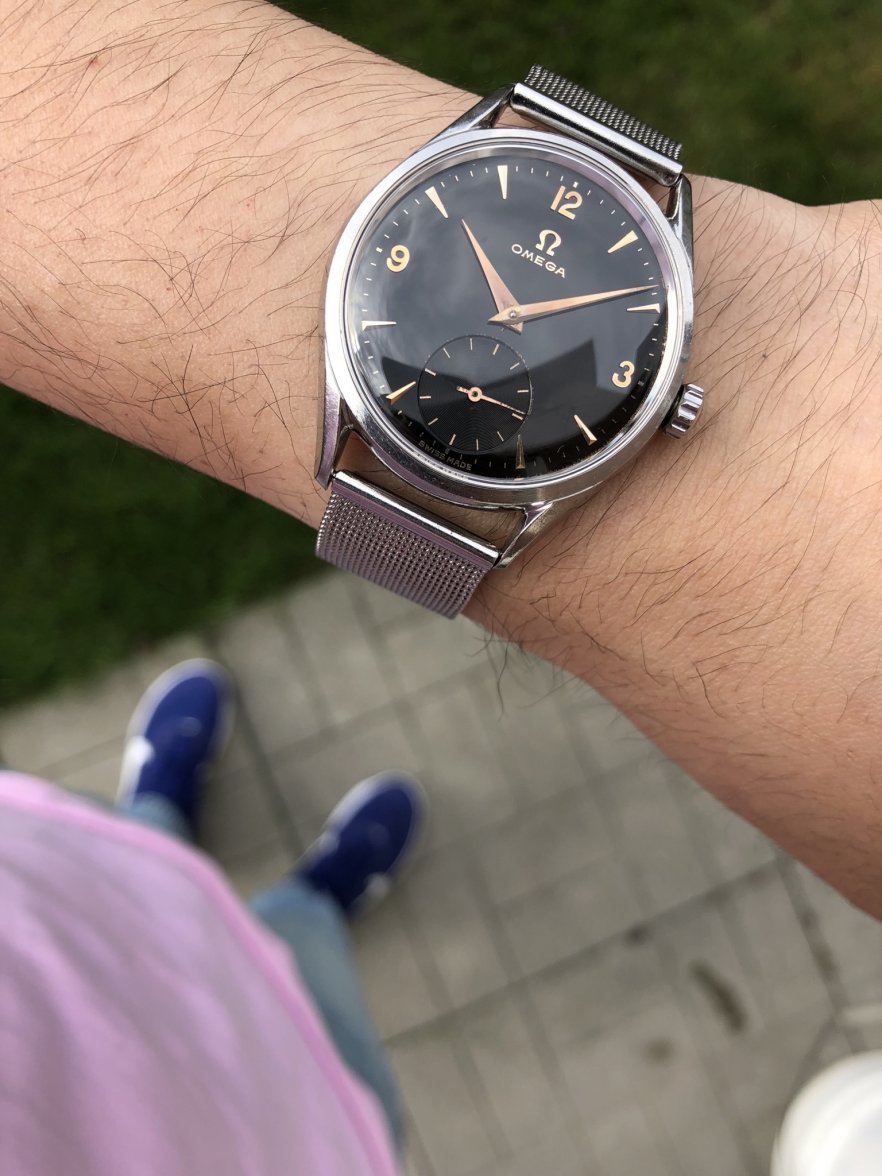
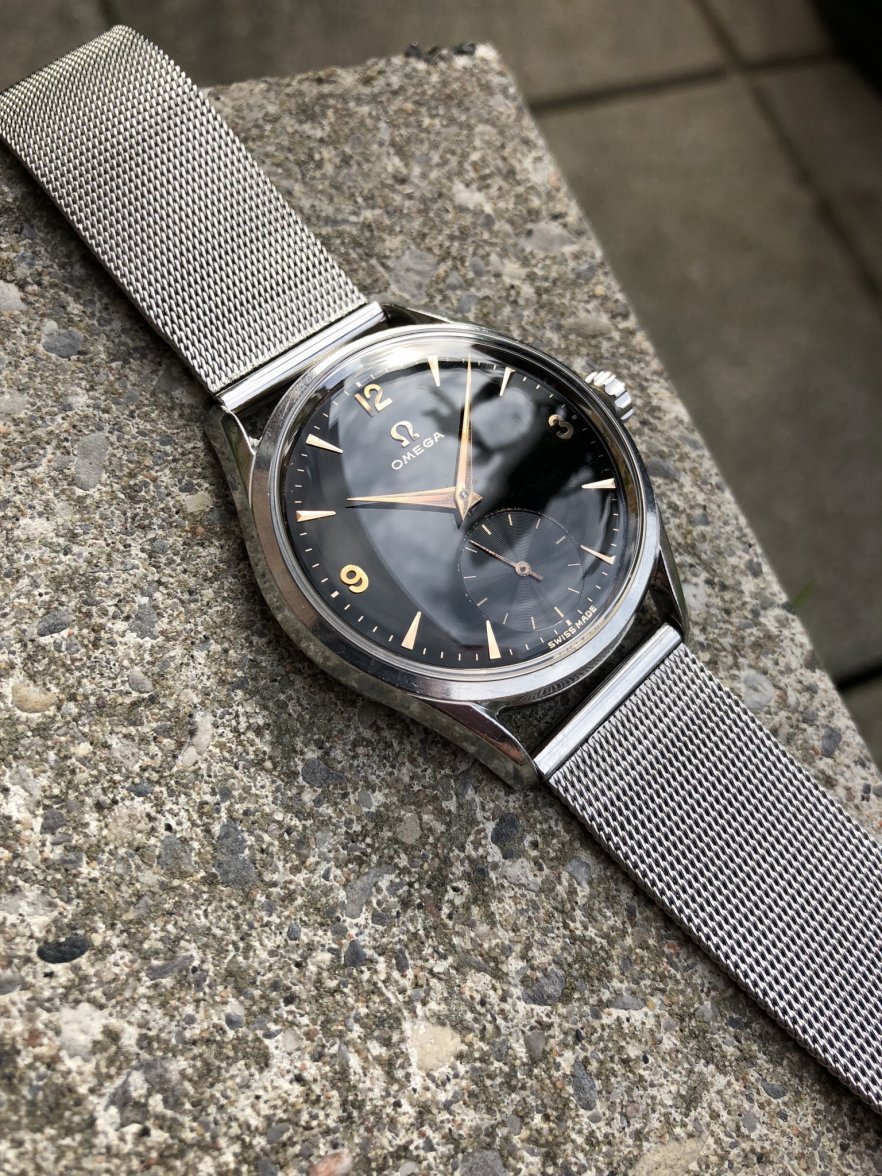
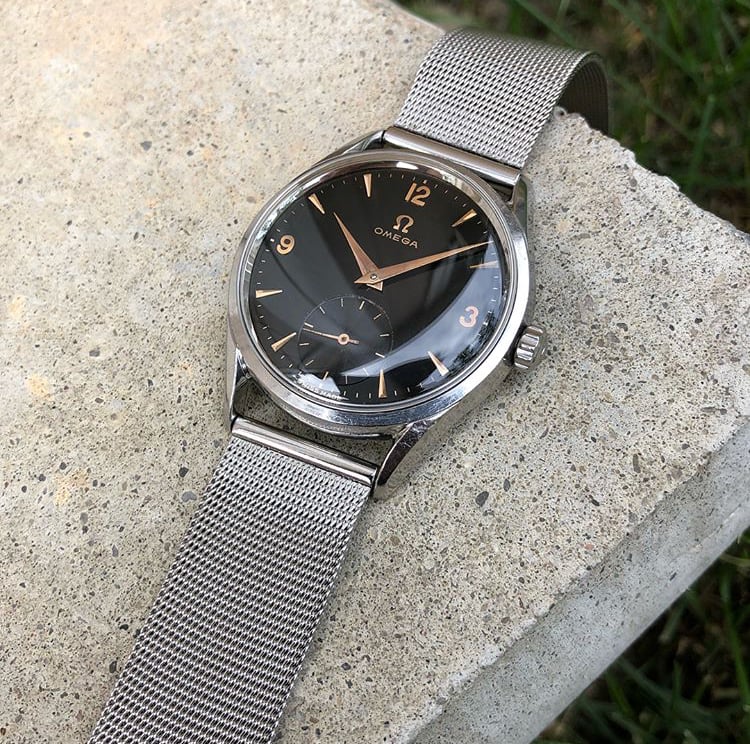
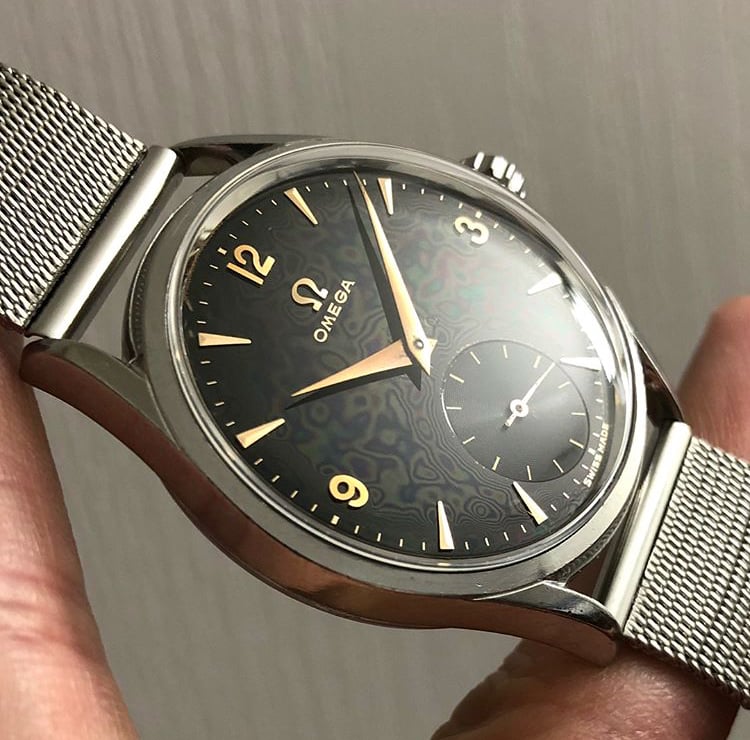
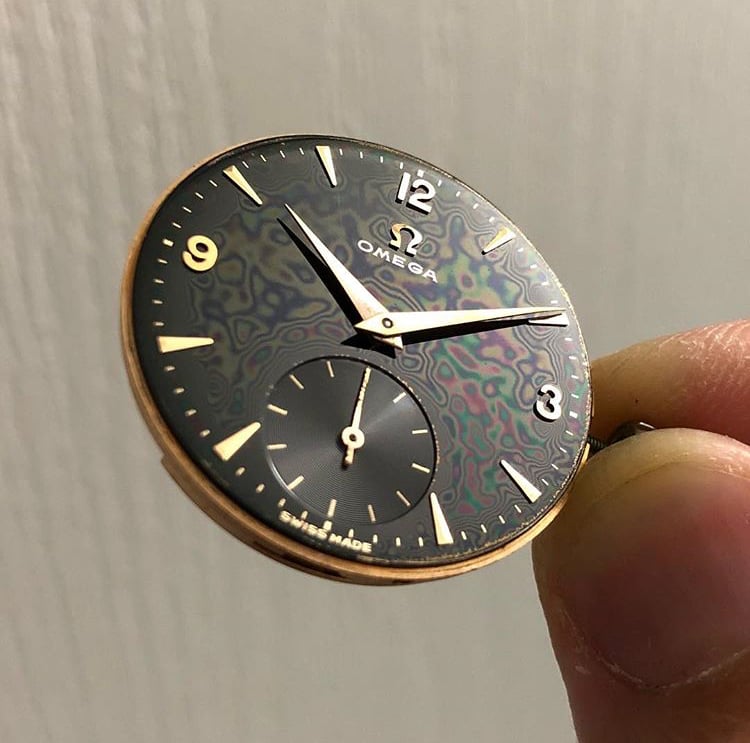
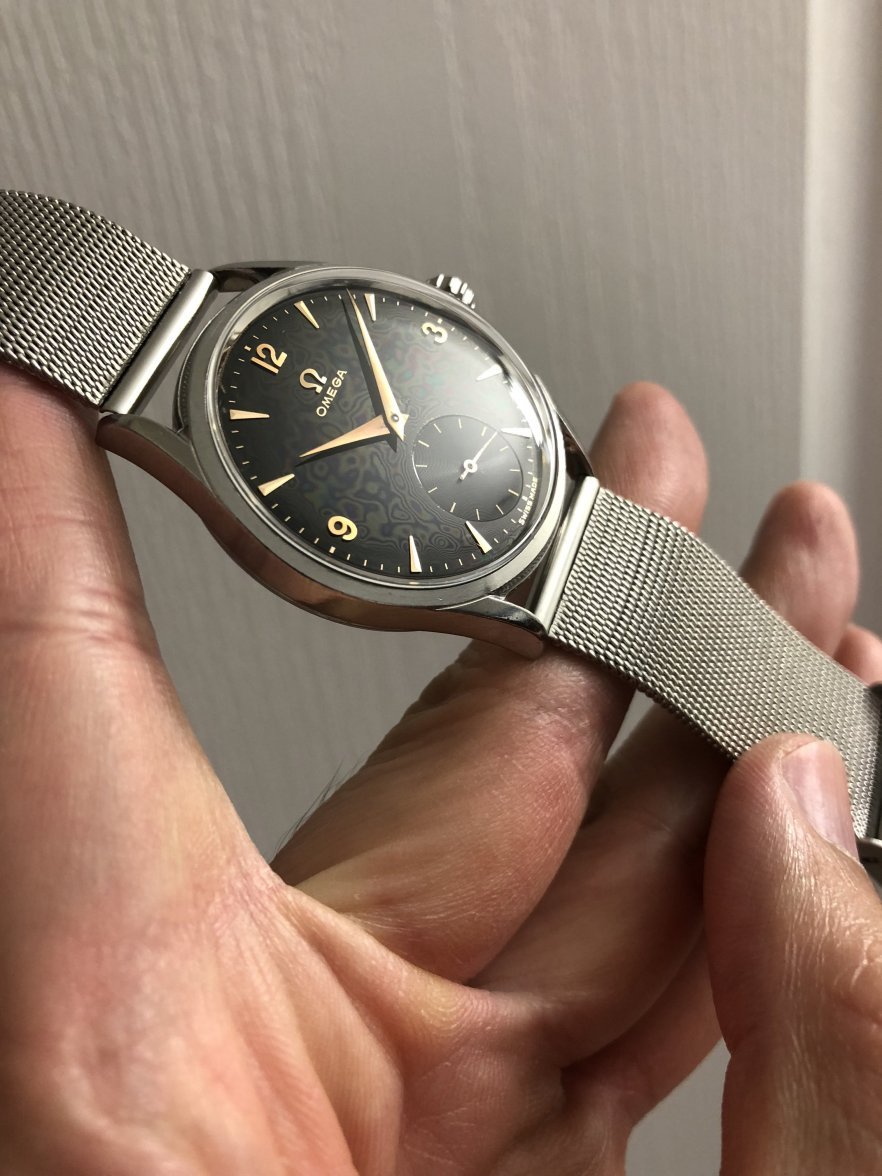
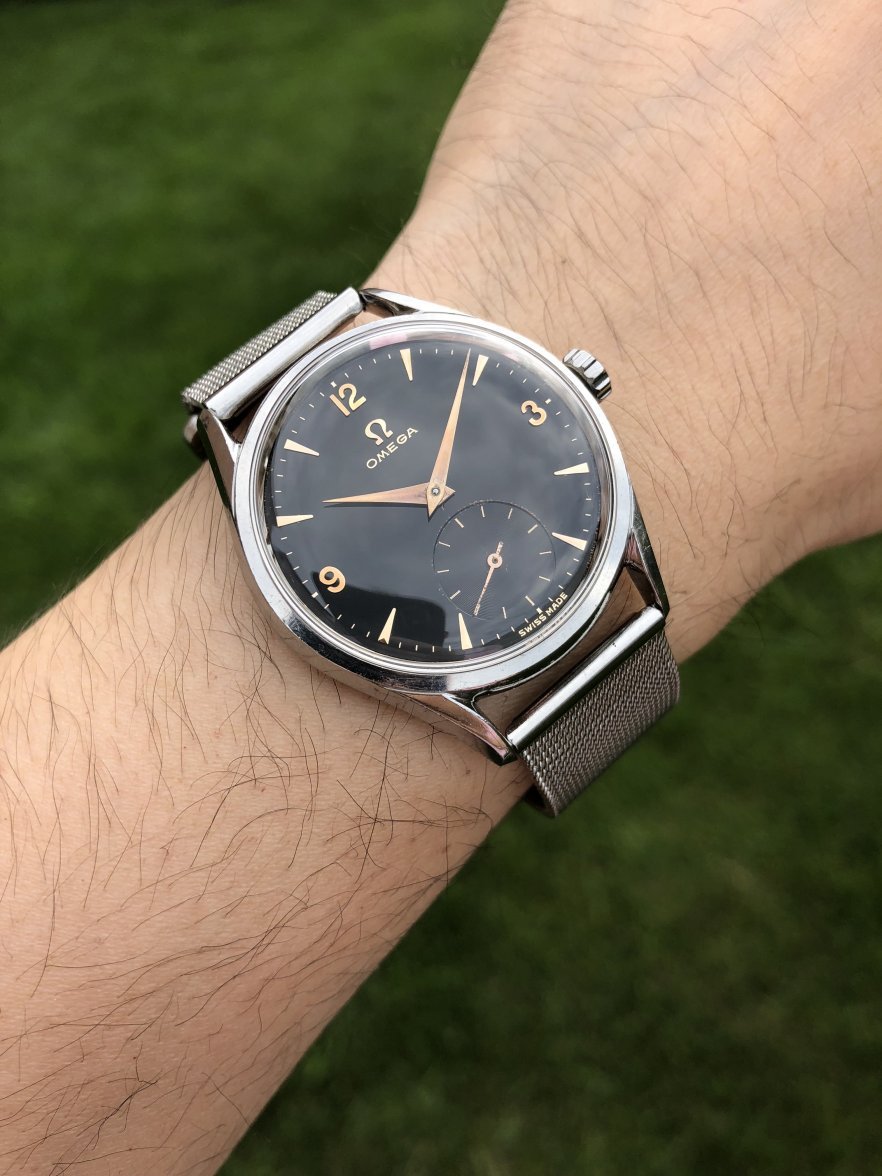
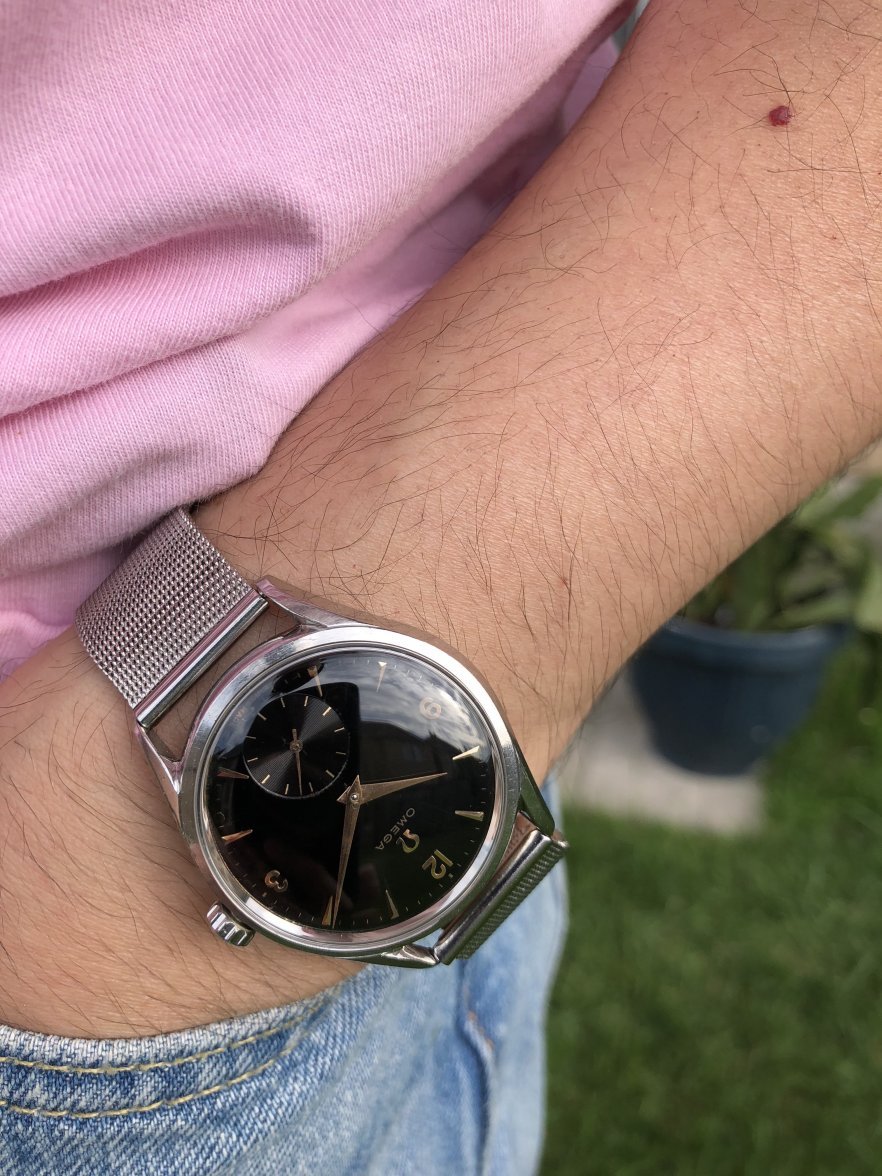
After 1 year of ownership in 2019:
Thereafter as we all know, COVID happened so I stored my watches away in my safe within a watch case along with all a slew of other vintage watches each in their separate plastic caskets.
Almost a year and a half (2021) later I took the watches out to inspect them and this is what happened to the watch:
Went back to the seller to ask what happened and he said he has no idea, this has never happened before so we thought to ask on OF.

There is no need to be rude, right? Or this is mandatory condition to use "BS", "listen", etc. You asked - i provided MY opinion. If you do not like it - do not answer. Very simple.
1) No-one has mentioned anything about service history or otherwise on this particular watch.
2) Marks on the dial from hands removal? Really? If your watchmaker struggles to avoid this, I will sincerely suggest that you look for a new one. Of the hundreds of vintage watches - unopened from new or serviced multiple times - I can count how many that have that sort of damage on one hand. And all of them have been very worn.
Listen, I am all for a discussion on the merits of a watch, but weird straw man arguments I will not respond to anymore. The above is straight up bullshit.
Not "in the next 2-3 years after the purchase", but after a prolonged stay in a sealed environment without any air circulation... To me it seems very plausible that some contained moisture could have worked at lifting the lacquer.
I will say again - there is yet to materialise anything tangible to support the notion of foul play. The only argument I see is "I don't understand what had happened therefore I suspect that the seller has tried to cheat the OP".
Come on, we're better than this.
@ConElPueblo : not only do I agree with you but also I feel that I have gone out of my way to indicate the fact that there are no grounds to suspect that there is any foul play at this stage. Please go back to my statements in this regard.
On the other hand, may be I could have used terms such as “strange”, “puzzling” or “curious” to describe the scientific enigma we are confronted with, instead of “suspect”.
Sorry, I misread your intention.

Unfortunately sometimes this happens...had this amazing bubbleback and the dial turned to an ugly color after dial sat in a plastic container in a regular envelope. First time this ever happened to me and my warchmaker.
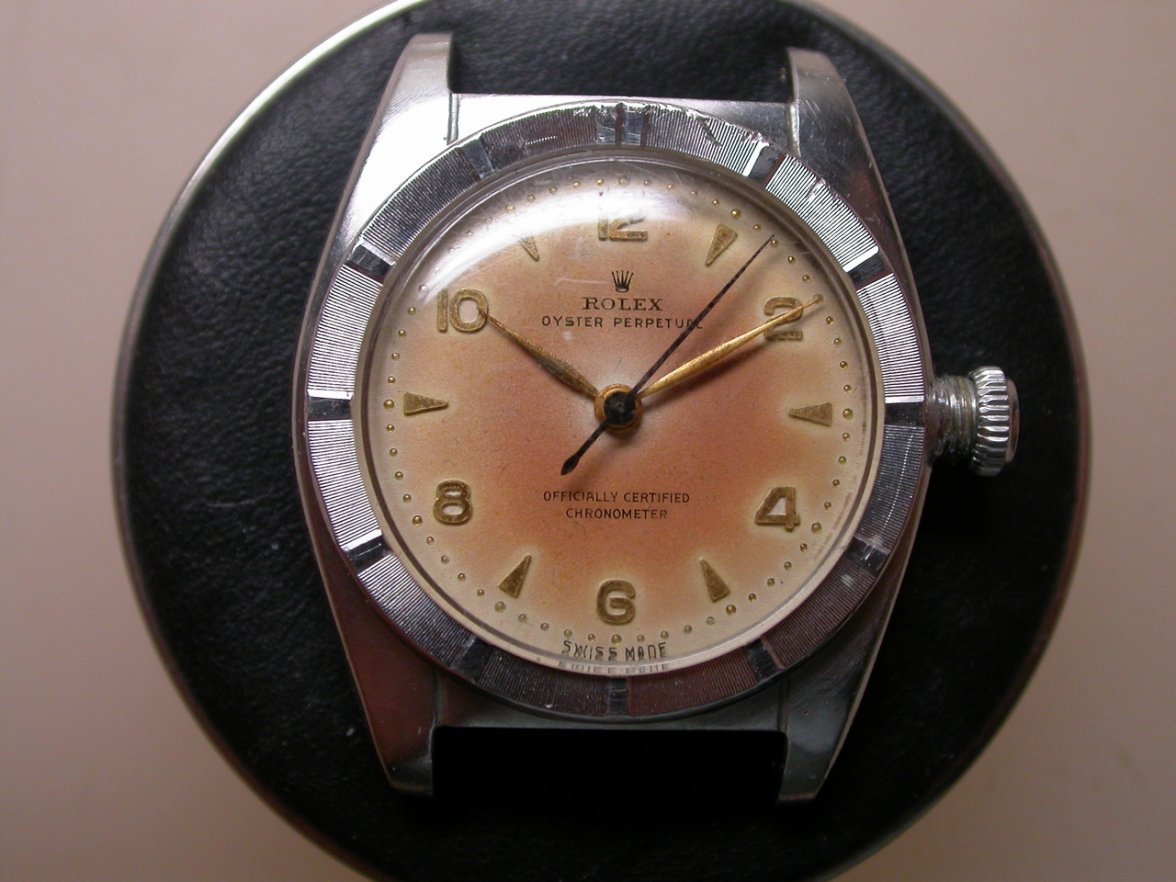
You can see some of the aging already around the subdial when it was with the seller. My guess is that something caused it to quickly happen to the rest of the dial.
Black dial is unforgiving - any marks would be visible. I did not notice and evidence of previous hands removal. It could be that previous watch repair people were so good at what they did, or it could be a sign of redial aka paint job.
The early signs of degradation were all there. I just didn't pay enough attention to it. Costly mistake of an amateur.
I think you are being too hard on yourself. IMO, you just got unlucky, and this is an unusual scenario. Many of us reading this thread have owned very large numbers of watches for long periods of time, and minor signs of damage to dark dials around sub-dials or at the edges are quite common. I have some watches that I have owned long enough to recognize minor changes over a 10-year period, but one does not expect a dial to fall apart in a few years. That is why this thread is on page 6, it's unexpected.